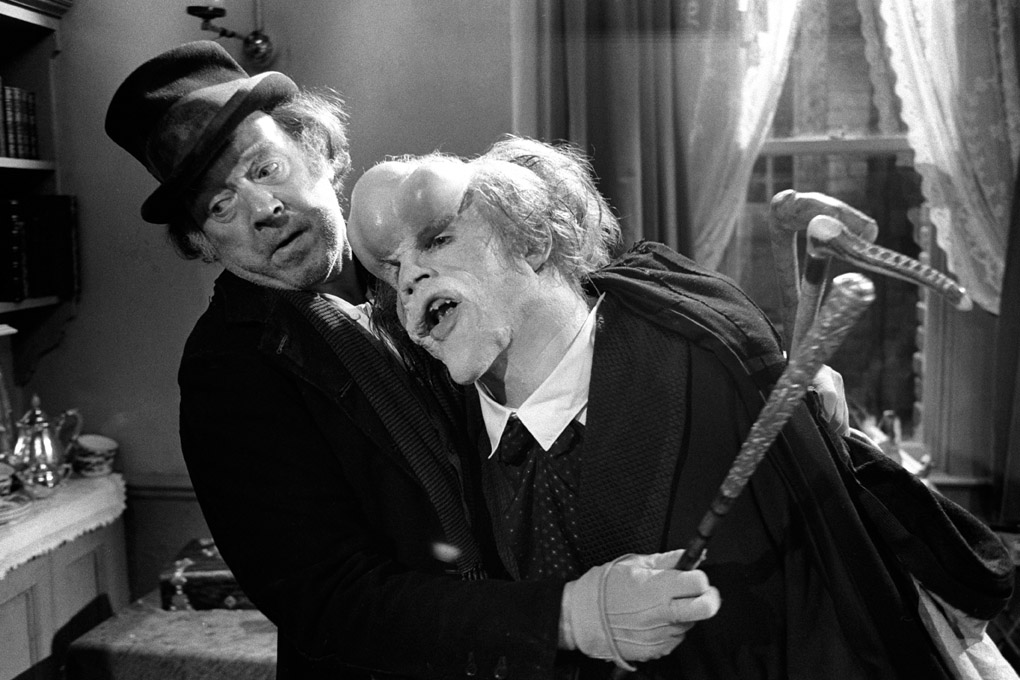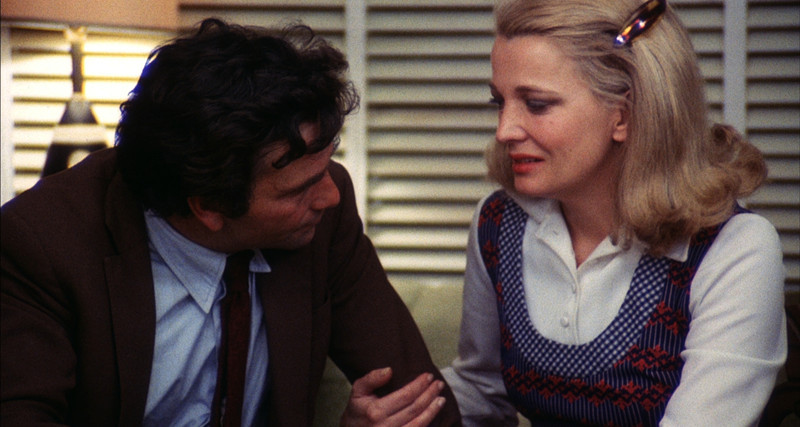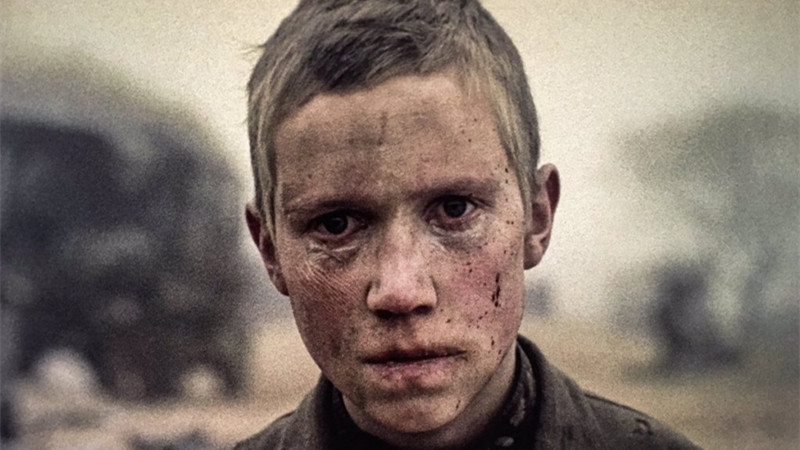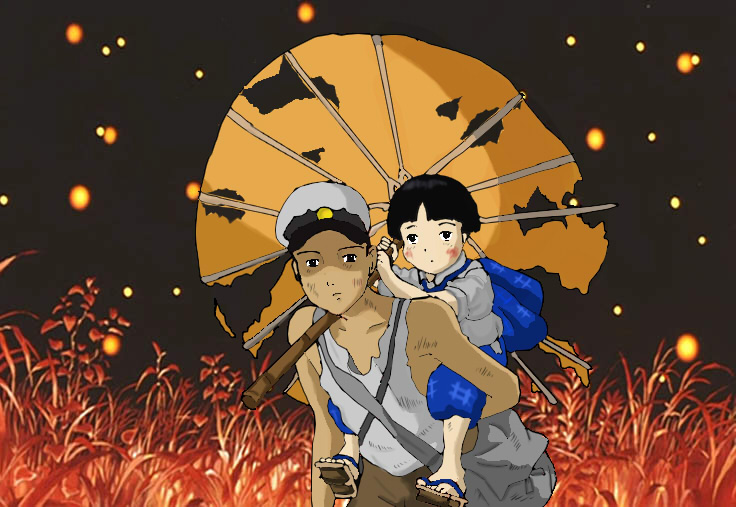5. The Elephant Man

A director not well known for delivering emotional, straightforward films, it’s surprising to find out that David Lynch was responsible for one of the most heartfelt movies of the 1980’s. Made only a couple of years after his I-don’t-know-what-the-hell-I-am-watching-but-I-love-it debut Eraserhead, The Elephant Man delivered emotion and sensitivity galore, as it told the real-life story of Englishman Joseph Merrick.
Merrick was born in the late 1880’s, suffering from severe deformities likely caused by a rare congenital disorder. Due to his appearance, Merrick spent a good chunk of his life being exhibited in freak shows around Europe.
It was at the circus where he got the name “Elephant Man”, before being discovered by a good-hearted surgeon who invited him to live at a hospital, so that he could be examined and studied. At the hospital, Merrick gained notoriety among the higher class of London, and once more began being seen as a “freak” and an aberration. The film chronicles his journey, culminating at his untimely death at the age of 27.
What makes The Elephant Man so remarkably moving are the quiet moments. The instances in which Merrick reveals himself to be an ordinary man behind his appearance, only wanting to fit in and be loved by someone. His cries for compassion and understanding are seldom heard, and he is constantly drawn into a life of abuse and misery.
No scene encompasses his character as well as the one in which he is chased and tormented by a group of passersby at a subway station before being cornered and scream “I am not an animal! I am a man! I am a human being.”
The film manages an impressive feat of being sensitive without falling into emotional manipulation, and John Hurt’s dazzling performance sells every bit of Merrick’s pain and humanity. One of the most beautiful and heartbreaking movies of the 80’s – and certainly Lynch’s most emotional –, The Elephant Man is the story of a human being who wants to be seen as just that, human. Bring some tissues, will ya?
4. A Woman Under The Influence

Is it possible for a movie to be exhausting? To get under your skin in such an unfathomable way, or even to make you physically sick (as was Richard Dreyfus’ case, after seeing this film), not due to gory or graphic aspects, but simply because it is so emotionally devastating? If you find the answer to be a sure “no”, then you probably haven’t seen John Cassavetes’ A Woman Under the Influence.
Shot with the financial and professional help of friends and family – as many other Cassavetes’ films -, A Woman Under the Influence centers around the mental and emotional collapse of a middle-age woman, and the effects this has on her family.
An already heavy premise becomes a literal nightmare caught on film, as the mentally fragile Mabel (played by an amazing Gena Rowlands) has to deal with her aggressive and desperately uncomprehensive husband, Nick, who seems hell-bent on constantly screaming and dismissing her as “crazy”. Mabel’s entire life seems fueled by chaos, and seeing her lose her mind before her family’s eyes, and even being committed to a psychiatric hospital, may prove too much for some to handle.
What makes A Woman Under The Influence such an upsetting view is its purported realism. Cassavetes, one of the main exponents of the Cinéma Verité, shoots his film almost as a home tape. Long uninterrupted shots of extreme close-ups, showing the emotional sincerity of a sick woman not realizing her condition, become agonizing to watch.
Cassavetes also – unmercifully – depicts Mabel in the middle of complex social interactions, when Nick expects her to behave as a good and pleasant housewife and serve his male friends. The audience, however, knows the scenes are but time bombs waiting to go off.
Voted one of the 50 best American movies ever made, A Woman Under The Influence will leave you sore and exhausted.
3. Come and See

The horrors of war have been abundantly documented in film, through different perspectives. The Pianist follows a Polish Jew as he struggles to survive in reclusion, hidden almost in plain sight. Son of Saul centers on a member of the Sonderkommando, a special group of concentration camp prisoners who escorted groups of people into the gas chambers. There are films who focus on the bad guys as well, such as Downfall, which tracks Hitler’s last days on office.
Few films, however, depict the mental and physical effects of war as brilliantly as Elem Klimov’s Come and See. Telling the story of a young boy’s journey through Nazi occupied Bielorussia, Come and See is filled with tragedy after tragedy after tragedy.
The boy, at first striving to serve at the Soviet forces is, little by little, presented to the gruesome reality of the battlefield. He loses his hearing, witnesses the death of his family, sees people being doused in petrol and burned alive. His initial naivety is shattered by his experiences, and all that’s left in the end is a shell of who the boy first was. His smooth grinning face is no more; now it is scarred and wrinkled, covered in mud and blood.
Come and See really excels at its depiction of the boy’s reaction to all he witnesses. He refuses to believe his family is dead; instead he firmly claims that they’re hiding in a small island crossing a bog nearby. All the people he encounters and is even mildly infatuated by are either killed in front of him or, in some cases, raped and tortured to an extent they lose track of who they are.
Like Landscape in the Mist, Come and See is an unflinching account of juvenile trauma and the loss of innocence. The latter, however, takes it one step further and shows its young character losing his own sense of being.
2. Grave of the Fireflies

You knew this one was coming, didn’t you? After all, it’s impossible to have a list of depressing and emotionally harrowing films without the grandfather of Jesus-Christ-I’ve-run-out-of-tears-to-cry movies, Grave of the Fireflies. Yet another war film (a recurrent motif for incredibly sad flicks), Grave of the Fireflies is told from the afterlife, as the spirits of its two protagonists recount the story of their last days.
Set in Japan at the very ending of WWII, Grave shows two young sibling’s struggles to survival after losing their family in an airborne strike, from which they came out unscathed. Having nowhere to go, the siblings are taken in by a distant aunt, who grows increasingly resentful and aggressive as food rations become a reality and she has to look after her nephews’ feeding.
At last tired of their mistreatment, the siblings run away and find refuge in an abandoned bomb shelter. When the younger sibling begins to hallucinate due to malnutrition, her older brother resorts to a life of crime to try and save her.
A great case for adult and mature animation films, Grave of the Fireflies is a sensitive and cautionary tale of the personal tragedies that war gives rise to. Indeed, the film barely mentions the grander scheme of WWII, or Japan’s position in the Axis.
Instead, it simply focuses on the lives of two children who lose everything in the wake of their isolation, and must fend for themselves when no one gives them aid or importance. A beautiful and powerfully devastating experience, Grave of the Fireflies is guaranteed to make you spend a couple of sheets of Kleenex.
1. Lilya 4-Ever

You’ll be hard-pressed to find a film in which literally nothing works out for the main character. You’ll be even more hard-pressed to find a film where everything goes so terribly wrong for the main character that when it’s inevitable, heart-shattering finale arrives it’s received almost as with heavenly relief. If, by any chance, you’re actually looking for such a film, Lilya 4-Ever is the one for you.
“Depressing” doesn’t even begin to cover Lilya 4-Ever’s plot. Helmed by Swedish director Lukas Moodysson, Lilya tells the story of a young girl forced into prostitution. Initially, Lilya lives in a run-down apartment with her mother, at some unnamed republic of the former Soviet Union.
One day, her mother moves to the USA with her American boyfriend, abandoning Lilya and forcing her to fend for herself. Lilya is then taken in by an ill-natured aunt, who steals Lilya’s apartment for herself and forces her niece to live in a smaller, horrid flat. Lilya’s best friend advises her to become a prostitute, but she neglects. Later on, however, after being taken for a call-girl and having her reputation completely tarnished in her community, Lilya begins prostituting herself.
What follows is an ever-degrading account of a never-ending nightmare. Lilya is abused to an unfathomable degree. Every small shred of joy or contentment she has dwindles and dies in front of her. Friends are gone, happiness is an unreachable reality. A promise of a better life is a disguised lie to conceal an even worse existence, paved in rape, violence and aggression. And the worst part? Lilya falls for it, head on.
A movie so incredibly disturbing that even its Wikipedia logline is a tough read, Lilya 4-Ever is the story of real-life hell. What makes the film even more distressing to watch is that it constantly reminds us that what we’re witnessing is likely happening right this moment, just outside the window.
Author Bio: Fernando Pompeu is unashamed to admit he loves Batman and Robin. He just tries to hide that information behind a lot of Bergman and Tarkovsky films. He also has a small production company.